When to harvest luffa – and how to process fruits for homemade sponges
Young, tender luffa can be picked and eaten, while you can dry mature fruits to use as natural sponges
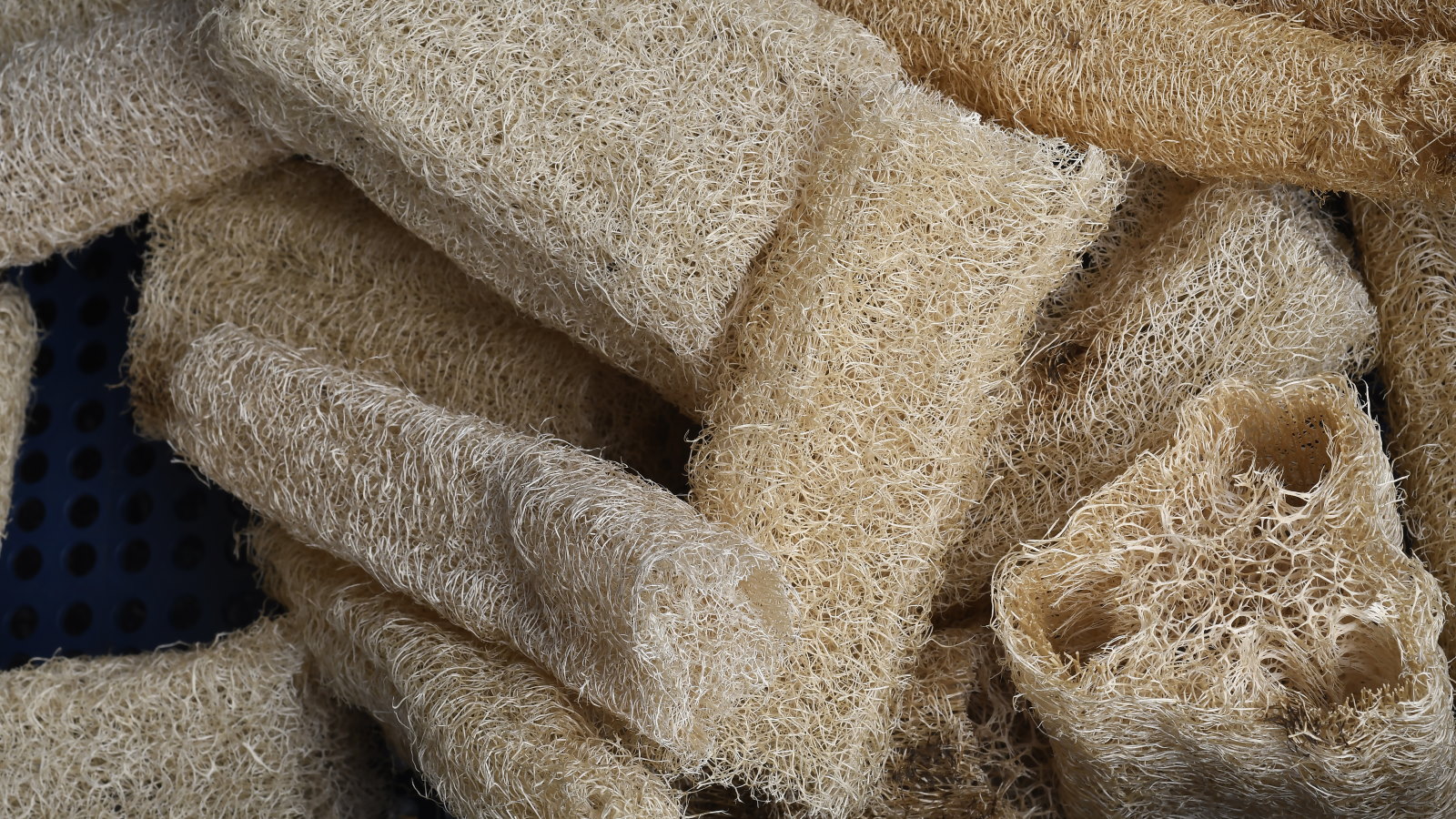

Luffa gourds are grown predominantly to be natural and sustainable sponges, however, the young fruits can also be harvested for cooking. There is a distinct difference between picking tender fruits for the kitchen and harvesting luffa sponges for the bathroom, so when are luffa ready to harvest?
Getting the timing right on both fronts is important. If you want to eat luffa gourds they are best young, as they become bitter and unpalatable when mature. On the other hand, harvesting luffa sponges requires patience as they need to mature on the vine.
If you are new to growing luffa plants, this guide can help you know when to harvest luffa. We also reveal tips on how to pick and prepare the gourds when harvesting luffa sponges.

Harvest luffa for natural sponges
A guide to harvesting luffa sponges
Whatever your luffa aspirations, you must pick the fruits at the right moment. To help you get that timing spot on and avoid a harvesting mistake, we look closely at when to harvest and get tips from a renowned luffa expert.
When to harvest luffa
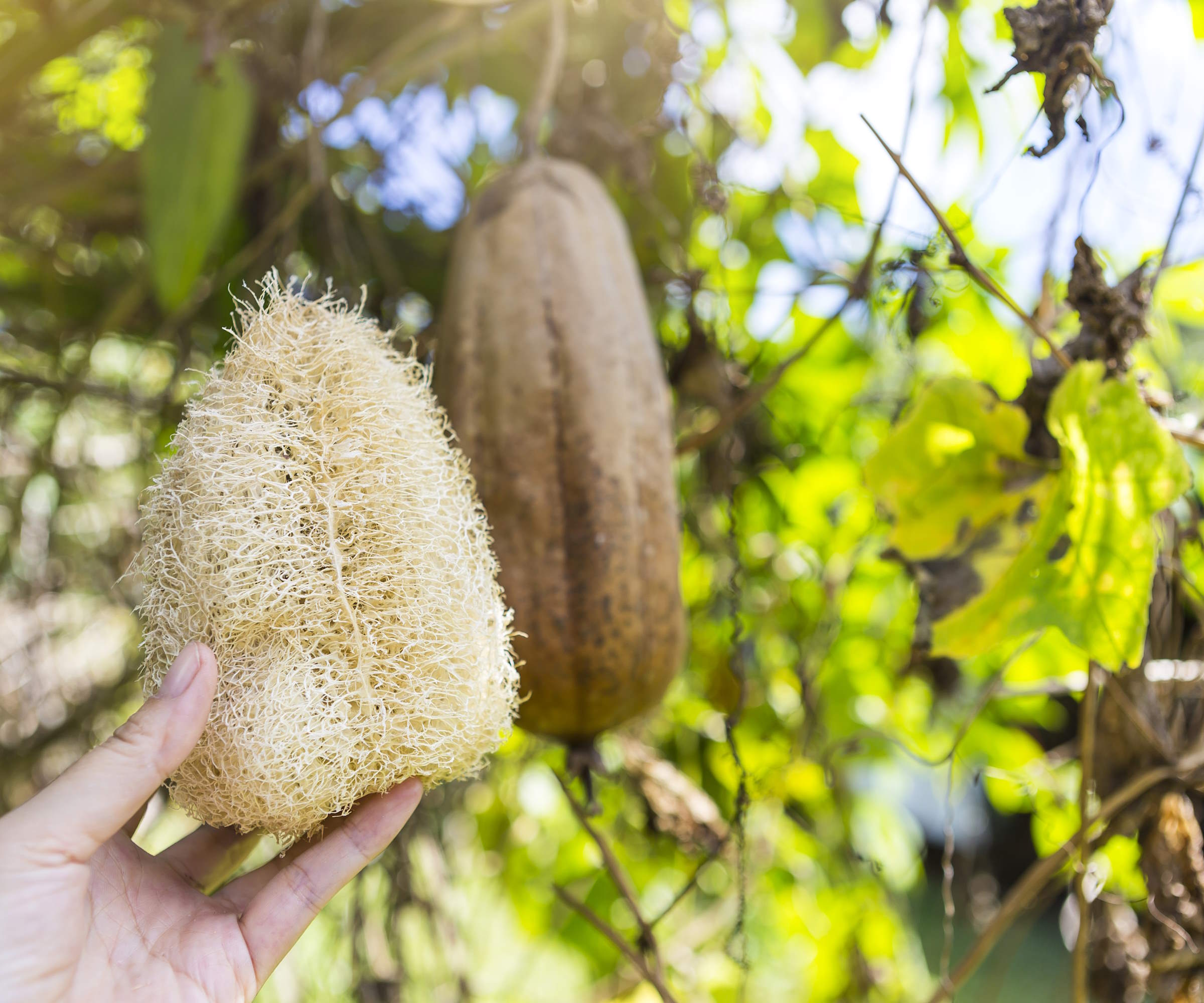
Luffa sponges are harvested from mature fruits
When you choose to harvest luffa will depend on what you plan to do with the fruits. Some growers eat the young fruits of luffa plants - a popular vegetable in many parts of Asia and some African countries.
To harvest immature luffa to eat, pick the fruits when they are tender and around four to six inches long. They are only edible at a young and tender stage, with a mild and sweet flavor before getting very bitter and tough as they age.
Luffa are more commonly grown for sponges. Janice Cox is a luffa expert and the author of Beautiful Luffa and she claims that the key to a good luffa crop is giving plants ‘sun, support, and pollinators’. ‘Given the right growing conditions in about 75 to 90 days you will have sponge gourds or luffas,’ says Janice. The trick to harvesting luffa sponges correctly is to let these fruits completely mature and dry on the vine.
It may sound like a long process and lead you to think about how long it takes for luffa to grow. It can take up to 200 total days from sowing seeds outdoors directly into the vegetable garden - which Janice Cox recommends as the best method - to mature and dried luffa sponges being ready to harvest.
The time for harvesting luffa sponges tends to come from late fall onwards and there are a few tell-tale signs they are ready to pick. The signs to look for include the color and weight of the fruits.
‘The outer skin turns a brown color and when you squeeze them you can feel them crack slightly. You can also hear the seeds rattle inside,’ says Janice Cox.
Harvesting luffa before frost
Dry luffa want to be picked before the first frosts. If you live in a colder climate that experiences earlier frosts, it may be a race against time to dry luffa on the vine before the cold weather arrives. If you cannot completely manage it, harvest the luffa earlier before the fruits turn completely brown and place them in a sunny and well-ventilated area to finish drying indoors.
Any frosts can damage the luffa and, if any fruits have been affected by frost, they want to be cut from the vine immediately and peeled to prevent further damage. Even if the fruit did not turn completely brown, it may still be usable once peeled if it has an established skeleton under the skin.
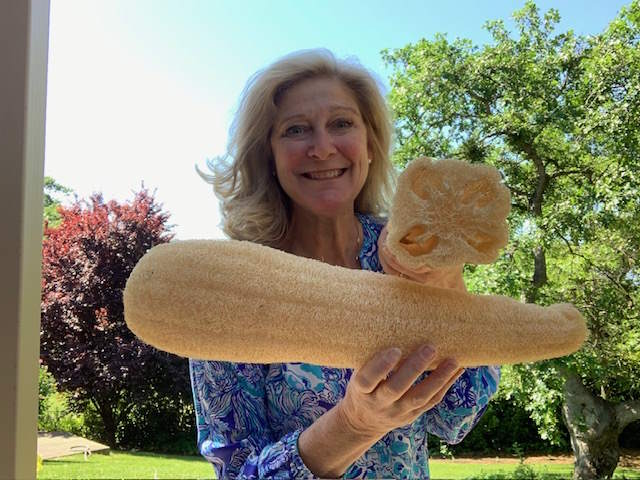
Janice Cox is a garden writer and natural beauty expert. She is the author of Beautiful Luffa, available at Amazon, along with Beautiful Flowers, Beautiful Lavender, Natural Beauty at Home, Natural Beauty from the Garden, Natural Beauty for All Seasons and the newly released Natural Beauty at Home Handbook.
How to harvest luffa
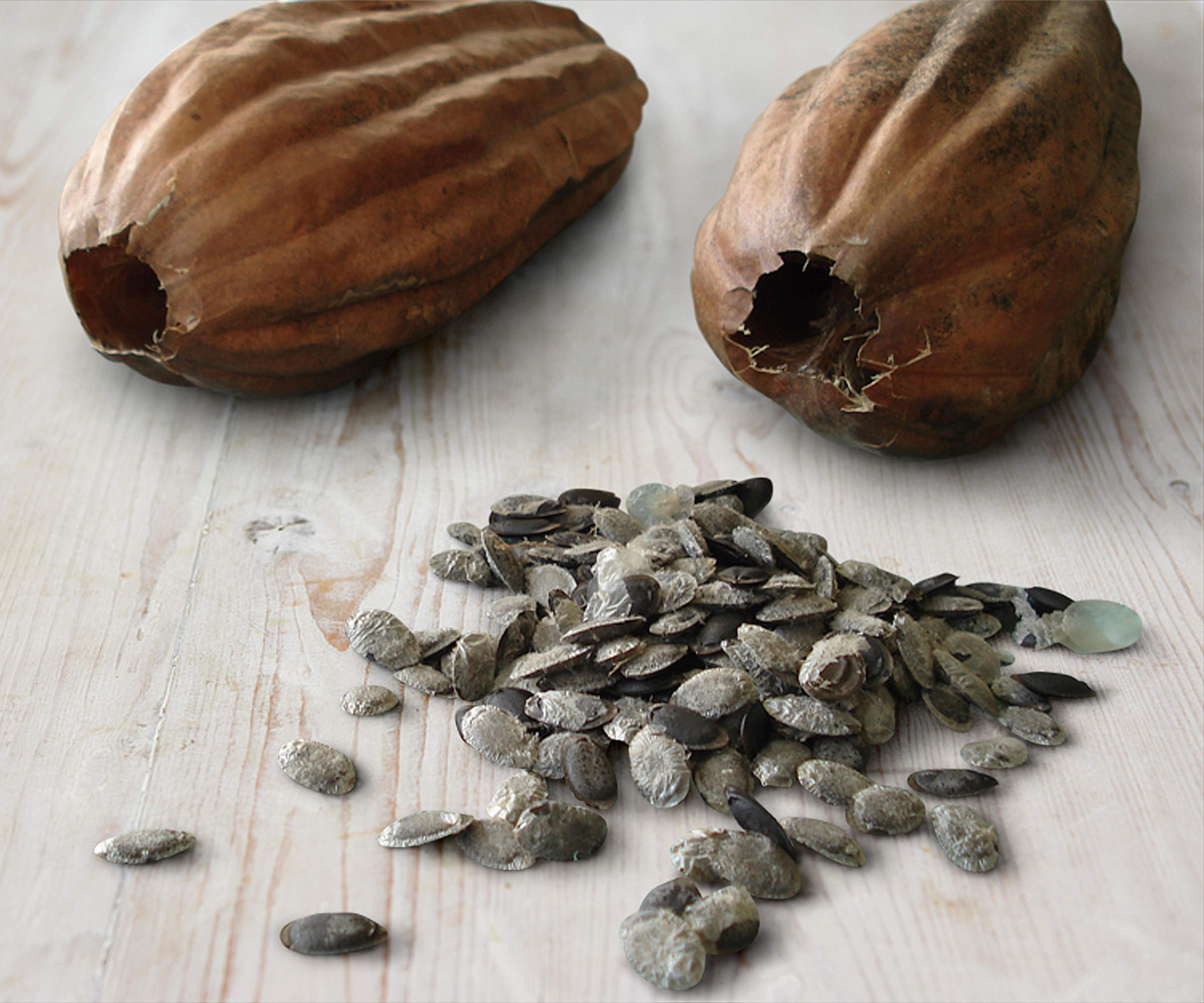
Seeds from harvested luffa can be sown again next year
The ripe luffa fruits want to be carefully cut from the vine when completely dry, using a pair of pruning shears or a sharp knife. While dry luffa can be twisted off the vine by hand, it is best to use garden tools to avoid damaging the fruit or the vine.
‘What we use as the luffa sponge is really the plant skeleton. You will need to peel the outer skin to find your sponge,’ says Janice Cox.
Squeezing the luffa or tapping it against a solid surface can help to separate the skeleton from the skin. A fully mature luffa should separate from the skin relatively easy, if the fruits are a bit immature it may be beneficial to dry them somewhere warm for a few days before attempting to remove them.
Cut the top and bottom off the luffa and then tap out the seeds from inside the fruit - you can collect the seeds and store them to sow the following year - then carefully peel the skin from the skeleton.
The luffa sponge will need to be soaked thoroughly before being used. Rinse the fruit thoroughly to remove any remaining pulp or seeds, then soak it in warm water for around half an hour. Allow the luffa sponge to dry completely in the sun and it is then ready to use.
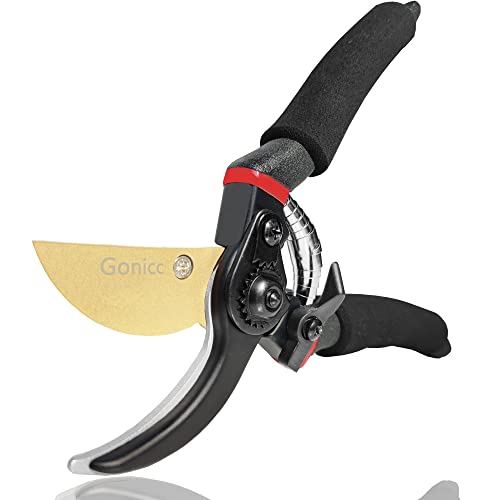
A pair of pruning shears ideal for lightweight pruning work and cutting stems less than 3/4" diameter. The blade is made of titanium steel and the shears have ergonomically designed non-slip handles.
FAQs
What happens if you harvest luffa too early?
If you harvest the luffa too early the fruits will be harder to peel and the seeds trickier to remove. The sponge may also be more liable to rot during the indoor drying process if the luffa is harvested too early.
When you harvest luffa that are still green, they may not have matured enough on the vine to have the sought-after fibre skeleton. Instead, they may still have a fleshy interior. Try to peel any green luffa immediately to reduce the risk of rot.
A luffa is not the only type of gourd that can be grown and harvested for practical purposes. Gourds have a long history of being used as water containers or musical instruments, and you can grow and harvest gourds at home to make attractive ornaments. All gourds must be harvested before the first frost and be dried somewhere warm before being used as decoration.
Sign up to the Homes & Gardens newsletter
Design expertise in your inbox – from inspiring decorating ideas and beautiful celebrity homes to practical gardening advice and shopping round-ups.

Drew’s passion for gardening started with growing vegetables and salad in raised beds in a small urban terrace garden. He has worked as a professional gardener in historic gardens and specialises in growing vegetables, fruit, herbs, and cut flowers as a kitchen gardener. That passion for growing extends to being an allotmenteer, garden blogger, and producing how-to gardening guides for websites. Drew was shortlisted for the New Talent of the Year award at the 2023 Garden Media Guild Awards.
-
 Zooey Deschanel and Jonathan Scott's breakfast nook is an innovative, effective use of kitchen space – it turns a 'dead area' into a cafe-style corner
Zooey Deschanel and Jonathan Scott's breakfast nook is an innovative, effective use of kitchen space – it turns a 'dead area' into a cafe-style cornerJonathan and Zooey have situated an eccentric yet elegant dining area in what may have been an otherwise underused corner
By Hannah Ziegler Published
-
 6 things you should never throw in the trash – and what to do for safe disposal instead
6 things you should never throw in the trash – and what to do for safe disposal insteadFrom batteries to space heaters, experts reveal what not to throw
By Andy van Terheyden Published